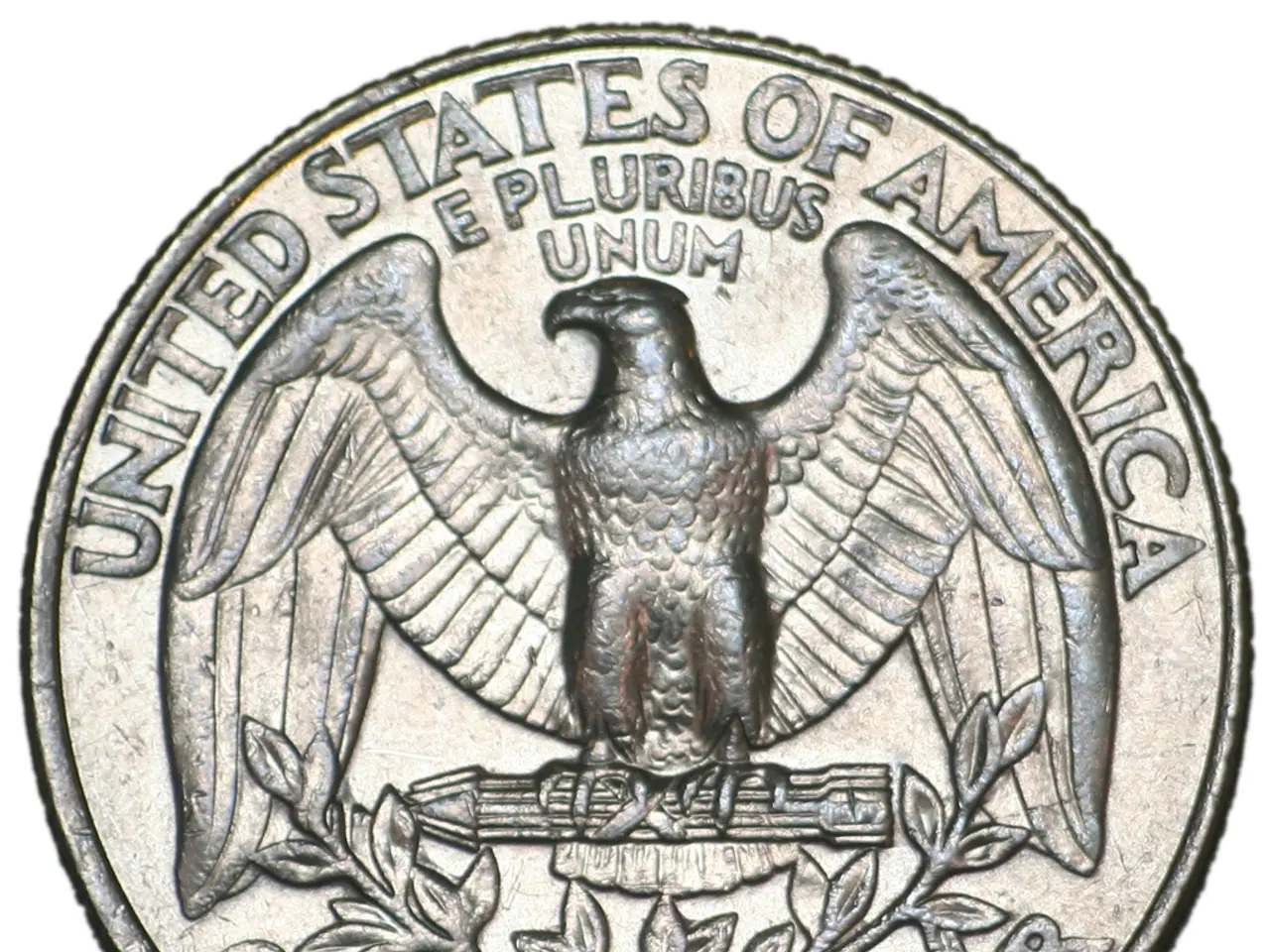Trump's 401(k) Executive Order Advances Toward Common Acceptance in the Financial Industry
In a significant policy shift, President Donald Trump signed an executive order on August 7, 2025, aiming to ease regulations and facilitate access to cryptocurrencies and other alternative assets within 401(k) retirement plans. This move could potentially broaden the mainstream adoption of digital assets.
The total retirement assets at the end of Q1 2025 amounted to $43.4 trillion, with $12.2 trillion (28%) held in defined contribution plans like 401(k)s and 403(b)s. If the executive order leads to the inclusion of digital assets in these plans, it could open up trillions more in capital to the crypto market.
The order encourages federal agencies such as the Department of Labor (DOL), Securities and Exchange Commission (SEC), and Treasury to revisit and possibly relax restrictions that currently limit or complicate the inclusion of alternative assets like cryptocurrencies in retirement accounts. This could potentially lead to wider availability of these options for millions of 401(k) participants.
Access through 401(k)s could introduce digital assets to conservative, long-term investors who previously had little exposure, thereby integrating cryptocurrency more deeply into mainstream financial portfolios. However, the exact impact depends heavily on subsequent regulatory guidance and market acceptance, and some caution remains regarding risks and provider readiness.
Industry experts, such as Brian Huang, cofounder of fintech firm Glider, and Joe DiPasquale, CEO of BitBull Capital, have weighed in on the potential effects of the executive order. DiPasquale stated that the move gives millions of Americans potential access to digital assets through familiar retirement vehicles, while Huang noted that the structural demand could help dampen volatility and broaden the investor base beyond the current retail and institutional mix.
The digital assets mentioned include on-chain stocks, RWAs, and tokenized private equity. Tim Enneking, managing partner of Psalion, emphasized the potential significance of the executive decision for digital assets, stating that the executive order could make the current $4T total market cap of the digital assets sector pale in comparison to what's coming.
Certain providers of retirement accounts still limit crypto exposure, even through ETFs and other traditional vehicles, according to Tom Bruni, editor-in-chief & VP of community at Stocktwits. Bruni predicts that the executive order will pressure the remaining holdouts to allow investors to access crypto through their accounts, or they'll risk losing market share. Brian Huang predicts that the majority of assets in 401(k)s will be on-chain in the future.
In summary, the executive order could materially increase the accessibility of cryptocurrencies through retirement vehicles like 401(k) plans, thus fostering broader mainstream adoption. However, the exact impact depends heavily on subsequent regulatory guidance and market acceptance, and some caution remains regarding risks and provider readiness.
Crypto markets could see a significant influx of capital if digital assets are included in 401(k) accounts, potentially exceeding the current $4T market cap, as suggested by Tim Enneking. This policy shift could also widen the investor base, inviting conservative, long-term investors to the crypto realm, as predicted by Brian Huang.




